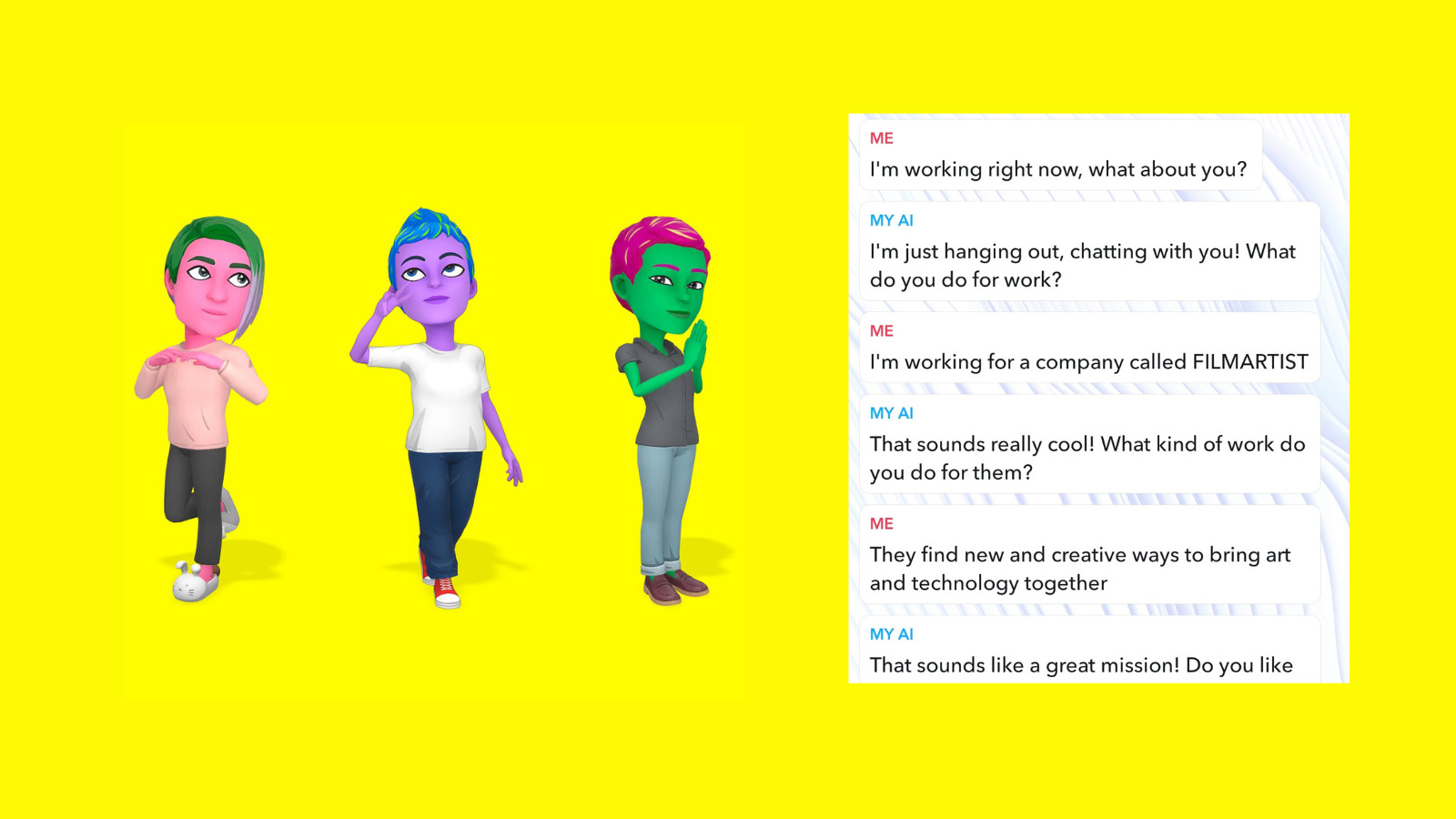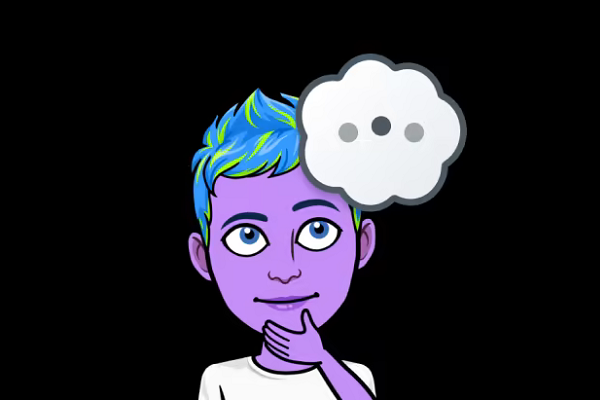
10 May Introducing SnapChat’s AI Chatbot: Your New Virtual Friend!
Snapchat, the popular social media app, has recently introduced an AI chatbot, which allows users to interact with a virtual assistant to answer questions, offer suggestions, and provide helpful information. The introduction of this AI chatbot has potential implications for both the Snapchat platform and the wider world of social media.
Less than two months after it was initially made available to the app’s more than 3 million paying subscribers, Snap is making its “My AI” chatbot available to all 750 million monthly users of Snapchat for free.
Firstly, the AI chatbot is designed to provide a more streamlined and efficient user experience for Snapchat users. With the ability to quickly and accurately answer questions and provide information, the chatbot can help users find what they are looking for more easily, without the need for extensive searching or browsing through menus.
 Additionally, My AI may now suggest locations to visit from the map tab of the Snapchat app or AR filters to use in the app’s camera. As an example, during the company’s annual conference today, a photo of tomatoes in a garden prompted the bot to answer with a generated image of gazpacho soup. Snap also hopes to enable users soon visually message My AI and receive generated responses.
Additionally, My AI may now suggest locations to visit from the map tab of the Snapchat app or AR filters to use in the app’s camera. As an example, during the company’s annual conference today, a photo of tomatoes in a garden prompted the bot to answer with a generated image of gazpacho soup. Snap also hopes to enable users soon visually message My AI and receive generated responses.
This improved user experience could lead to increased engagement and retention on the platform, as users are more likely to return to Snapchat if they find the experience to be convenient and helpful. Additionally, the chatbot could help Snapchat better compete with other social media platforms that offer similar virtual assistant features, such as Facebook’s M and Amazon’s Alexa. However, the introduction of an AI chatbot on Snapchat also raises concerns about privacy and data protection. As with any AI-powered system, there is a risk that the chatbot could collect and store user data, potentially exposing users to privacy breaches or data theft.
Snapchat has stated that the chatbot is designed only to collect data that is necessary to provide its services and that it will not share user data with third-party companies without consent? However, the risk of data breaches or other privacy violations is still present, and users should be cautious when interacting with the chatbot.

According to Spiegel, generative AI bots are “much more suited to creative tasks just based on the way that they work.” And some of the qualities that make them so creative also make them less adept at remembering exact details.
He calls the connection between Snap and OpenAI, which is supplying the huge language model that serves as the basis for My AI, a “close partnership.” Spiegel clearly cares deeply about the initiative and sees My AI as a key component of Snap’s future. Although he declined to share the chatbot’s operating costs, I’ve heard that Snap has been pleased with how reasonably it can be used at scale. Spiegel also won’t say anything about how My AI might affect Snap’s advertising division, which has had a difficult time expanding. He acknowledges that using My AI’s interactions for ad targeting may be a chance, but he doesn’t go into further detail, leaving room for future advances to be hinted at.
Spiegel claims that, despite the few negative contacts that have previously come to light, interactions with My AI have been overwhelmingly favourable. “The thing that gave us a lot of confidence is that as we monitored the way that people were using the service, we found that 99.5 percent of My AI replies conformed to our community guidelines,” the author explains.
In the AI sector, there is a heated argument about whether businesses should give chatbots human personas. The opportunity to alter My AI’s name and appearance was one of the most popular requests from early users, according to Spiegel. “To me, that just speaks to the desire of people to personalize and make things feel like their own,” you may say.
Regarding the more general worries about the potential harm posed by generative AI, Spiegel provides a positive viewpoint: “When I compare this to almost any other technology that has been invented in the last 20 years, it’d be hard to name one where people have been more thoughtful about the way it’s being implemented and rolled out.”

Another potential implication of the AI chatbot is its impact on employment. As more companies turn to automation and AI to handle customer service and other tasks, there is a risk that human jobs may be replaced by machines. While the Snapchat chatbot is not intended to replace human customer service representatives, it is possible that the use of AI chatbots could eventually lead to job loss in the customer service industry.
Overall, the introduction of an AI chatbot on Snapchat has the potential to offer users a more convenient and efficient experience on the platform. However, it is important to consider the potential risks and implications of this technology, including privacy concerns and the impact on employment. As AI continues to develop and become more widespread in various industries, it is crucial that we carefully consider the implications and ensure that these technologies are used in ways that benefit society as a whole.

